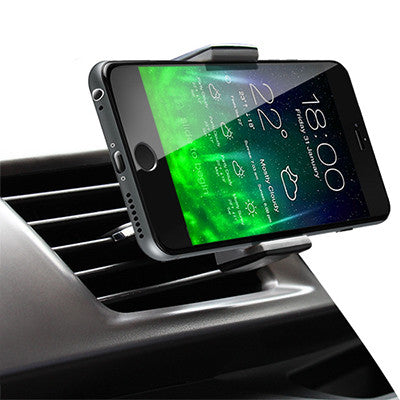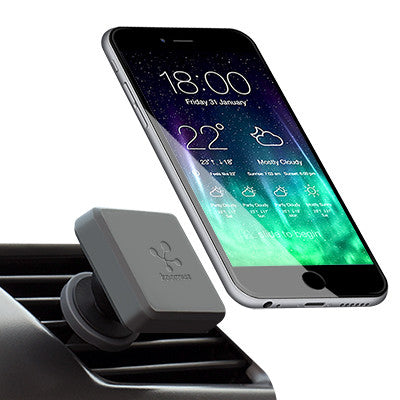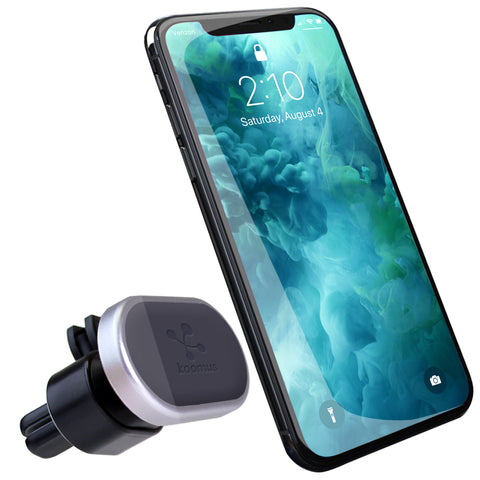- Continue Shopping
- Your Cart is Empty
Best VIN Checker for Used Cars: Make the Right Choice
To find the best VIN checker before buying a used car, start with tools that reveal hidden damage, title brands, odometer fraud, and ownership history. A reliable VIN check service pulls data from DMVs, insurers, and auctions to help you avoid buying a car with serious past issues. This guide shows exactly which free and paid tools to use, how to interpret the report, and what red flags to look for, so you don’t waste money or end up with a problem vehicle.
Why VIN Checks Are a Must for Used Car Buyers
When you’re buying a used car, you need proof - not promises. A thorough report compiles the vehicle’s history from state DMVs, insurers, and auctions to reveal issues early. It highlights accident history, prior use, and title issues so you can plan the next steps. Smart car buyers use reports before test drives to avoid surprises and win better deals. The goal is simple: peace of mind.
- Confirm identity with the vehicle identification number.
- Review vehicle history information across states and insurers.
- Check for salvage or total loss events.
- Validate mileage readings.
- Compare disclosures against detailed information.
Independent audits in the automotive industry often find material discrepancies in a notable share of listings, reinforcing the need to verify claims before money changes hands.
How to Locate the VIN on Any Vehicle
Modern cars use a unique 17-digit code tied to registrations, recalls, and lien records. You’ll need it for any lookup, whether you want quick basics or a full report. Always compare several locations; if one tag looks altered, another should match. Keep photos of labels for your files and the car’s history.
- Windshield lower corner (driver side, dashboard plate).
- Driver-door jamb sticker with build data, make, and model.
- Registration, title, insurance card, or service paperwork.
- Engine bay stamp or firewall plate.
- Trunk spare well or under-seat tag on some models.
Even a small rate of VIN plate tampering scales to thousands of cars annually, so cross-checking locations is essential.
How the VIN Decoding Process Works
A VIN is divided into sections. The first three characters are the world manufacturer identifier (WMI). The next block encodes body style, restraint systems, and engine attributes. A check number validates the sequence mathematically. The last characters define model year, factory, and serial sequence. Decoding aligns physical features with documented vehicle information to uncover inconsistencies.
- Read the WMI to confirm brand, region, and factory.
- Parse attributes to verify engine, trim, and safety systems.
- Validate the check digit to ensure data integrity.
- Confirm model year and assembly plant data.
- Match serial sequence to production records for added assurance.
Best Free VIN Check Tools for Basic Screening
Start with free services to confirm identity, open recalls, and theft risks. These tools provide basic information fast, and many offer free reports that you can upgrade later with a paid VIN check for depth.
EpicVIN's Free VIN Decoder
EpicVIN quickly decodes trim, engine, and model year, then points you to deeper records when needed. It’s widely regarded as a reliable VIN check service for everyday screening. Use it to verify badges and specs before traveling to see a car, and to spot early mismatches during your search.
- Fast decode with trim/engine attributes.
- Quick spec confirmation.
- Links to detailed vehicle history if required.
- Simple search flow on desktop and phone.
NICB VINCheck
NICB focuses on theft and title status alerts from participating insurers. It’s ideal as a first-pass option before scheduling a visit. Because it flags salvage/loss markers where reported, you can filter out obvious risks quickly and save time.
- Theft records and salvage indicators from insurers.
- Flood/loss notations when available.
- Quick web search, no account required.
- Helpful triage step before any long drive.
NHTSA Recall Lookup
This official tool shows open manufacturer recalls tied to the VIN. It helps you prioritize safety fixes before highway testing. NHTSA offers a free query, and most dealerships will complete recall work at no charge once parts are available. Check again after repairs to confirm closure.
- Official manufacturer recall status and descriptions
- Remedy availability and scheduling guidance
- Printouts are accepted by many dealership service desks
- Useful for airbags, fuel systems, and brake campaigns
About a quarter of vehicles on U.S. roads carry at least one open recall at any time, according to safety agency tallies.
Paid VIN Report Services: Full History at a Price
When you’re close to buying a used car, step up to paid options that compile nationwide incidents, liens, usage flags, and service events into a cohesive narrative of the vehicle’s history.
EpicVIN's Full Vehicle History Report
EpicVIN’s premium report extends decoding with title, lien, and prior listing data, plus images when available. It’s a strong fit when you need negotiating evidence and want to understand patterns over time. You’ll see trends in pricing, ownership, and sales history to support fair offers.
- Multi-state title history and lien checks
- Prior listings, price trends, and auction history
- Damage timelines, reported accidents, and airbag deployments
- Market comparisons to benchmark your offer
Carfax
Carfax aggregates DMV events, service records, and shop entries. It’s widely used across dealership networks, which can help at trade-in time. For vehicles with heavy maintenance footprints, Carfax surfaces breadcrumbs that frame the car’s service history and use patterns.
- Emissions, inspections, and registration renewals
- Maintenance entries and odometer readings
- Ownership history and commercial-use indicators
- Lender/lien notes and event timelines
AutoCheck
AutoCheck emphasizes risk scoring and broad multi-auction coverage. Its comparative approach helps you weigh candidates quickly. It’s especially handy when screening several cars at once across free and paid ecosystems before you commit to travel or a mechanic visit.
- Event scores to compare similar vehicles
- Cross-state traces and multi-auction feeds
- Commercial, lease, and rental flags are summarized
- Clear charts for trend spotting and detailed history snapshots
Reading a VIN History Report: Key Sections to Know
A detailed vehicle report is more than a PDF; it’s your road map for decisions. Read in order: identity, legal status, usage, damage, and market context. Always ensure the decode matches what you see on the metal and screens. Save the full report for negotiations to demonstrate the car’s history.
|
Section |
What It Shows |
Why It Matters |
|
Identity & Decode |
WMI, trim, engine, year |
Confirms the car matches labels and claims |
|
Title history |
Brands, liens, salvage title |
Determines legal status and resale impact |
|
Usage |
Personal, lease, fleet, rental |
Predicts wear and future costs |
|
Damage & Loss |
Collisions, reported accidents, floods, total loss |
Guides safety and repair budgeting |
|
Odometer |
Entries, gaps, inconsistencies |
Screens for rollback and hidden problems |
|
Market & Listings |
Prior ads, prices, sales history |
Negotiation leverage and depreciation insight |
|
Recalls |
Open campaigns and remedies |
Confirms safety status before delivery |
|
Photos & Docs |
Auction images, receipts |
Visual proof beyond text claims |
Branded-title cars often transact far below clean-title comparables, but documentation quality and repair evidence heavily influence the discount.
Hidden Risks Found in VIN Reports
Not every problem is obvious. Watch for fast multi-state moves, out-of-order dates, repeated sales in short windows, and other red flags. If something feels off, plan a pre-purchase inspection and budget time to verify paperwork fully.
Title Brands
A brand signals a major event or use category. Common labels include flood, rebuilt, lemon, or salvage. A brand can limit financing, affect insurance, and reduce resale. Scrutinize repair invoices and photos; glossy images alone don’t prove structural integrity or alignment quality.
Odometer Rollback Indicators
Mileage manipulation still happens, especially on high-value SUVs and diesels. Look for gaps in vehicle history or sudden resets after electronics work. Compare wear items with stated miles, and ask for receipts to support the story.

Fleet/Rental Use History
Fleet or rental duty isn’t automatically negative; the difference is maintenance quality. Many professional operators follow strict intervals, but drivers vary. Expect more cosmetic wear and rock chips. Balance condition, options, and pricing against documentation, and remember that a well-documented used vehicle can still be a solid buy.
VIN Fraud and Data Gaps: What Reports Might Miss
Reports compile third-party feeds, and gaps happen. Small shops may not offer repairs, and private sales often leave a light footprint. Late reporting can hide recent incidents for a while. Treat reports as powerful tools, then verify their accuracy. Compare photos, scan modules, and match the car’s VIN to paperwork.
|
Risk |
What Can Happen |
How to Respond |
|
Clone/Swap |
A duplicate VIN appears on another car |
Match VINs across labels and glass; verify plates |
|
Incomplete Feeds |
Small-shop repairs missing |
Ask for invoices; test-drive and scan for codes |
|
Late Reporting |
Recent crash not yet posted |
Recheck later and schedule an inspection |
|
Cross-Border Moves |
Data split across regions |
Combine multiple VIN check services for breadth |
|
Manual Errors |
Typos or misreads in entries |
Validate against physical tags and documents |
The National Highway Traffic Safety Administration estimates that more than 450,000 vehicles are sold each year in the U.S. with false odometer readings, costing consumers over $1 billion annually.
Summary
Free screeners confirm identity and recalls, while premium reports map ownership, liens, and damage across years. Combine both with a hands-on inspection and paperwork review. That approach guards your budget, sharpens negotiation, and strengthens the used car’s resale story when you’re purchasing a used or purchasing a used car.
FAQ
Do VIN Checkers Flag Fake or Cloned VINs?
Many tools highlight mismatches between decoded specs and the car in front of you. Still, verify physically: compare plates, door stickers, and glass etchings, and check that the car’s VIN matches documents exactly.
Can I Check a VIN Before an Auction Car Is Listed for Sale?
Yes. Run free decoders and theft checks first, then upgrade after the listing is live. Look for early auction history photos to validate options, equipment, and any sign of fresh damage.
How Often Are VIN Databases Updated in Real Time?
Most vehicle data sources batch daily or weekly, while recall and theft systems can post faster. If you suspect a recent incident, re-run your search after a few days and document changes.
What Does It Mean If the Report Shows No Records?
- Sometimes it reflects a light footprint or delays.
- Low-mileage local car with minimal paperwork.
- Events not yet posted to shared databases.
- Private maintenance without digital logs.
Will a VIN Check Reveal Insurance Claims?
Reports usually surface insurer events, liens, and title status changes, but not every claim appears. Use the report to guide questions and pair it with a pre-purchase inspection when details are unclear.







